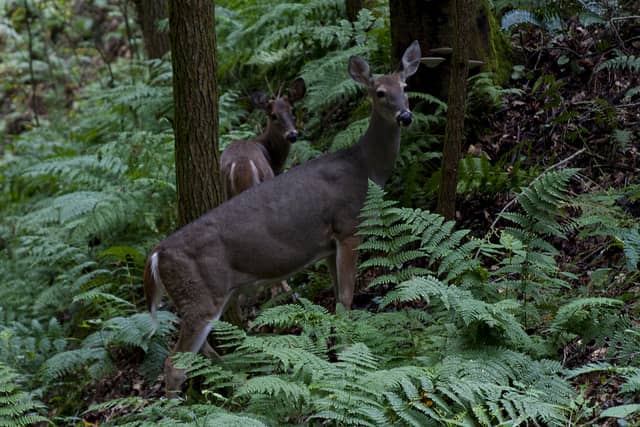Sustainability: Wildlife is the Model
Safari Club International 01.25.12

“Sustainable” (insert your preferred commodity here) has become the new buzzword for anyone and everyone who wants to make a serious impact to help conserve our planet’s natural resources.
For example, sustainable energy development has become most prevalent in recent times. The energy currently being produced on wind farms and via solar energy has greatly raised the awareness among the general American public for the concept of “sustainable.” More so that the term “green,” “sustainable” reflects both the common-sense utilization of resources with the goals of decreasing human impact on the planet — while still maintaining growth in our U.S. and world economies.
I would like to reflect today on an often overlooked natural resource that offers a sustainability paradigm: our nation’s abundance of wildlife. Please let me explain. Wildlife species, like the North American Whitetail Deer, are currently estimated at all time highs in their population count, with some estimates suggesting there are over 25 million deer in the U.S. alone. By contrast, deer populations at the turn of the 20th century dipped as low as 500,000.
So, how does this relate to sustainability?
Every state’s wildlife resources agency manages wildlife populations to prevent the ravages of overpopulation – and the dangers that come with it, such as vehicular accidents. They generally allot a certain percentage of the state’s deer herd to be harvested by hunters. The state tightly regulates the number of deer harvested so as to not exploit the herd, thus allowing continued growth. Hunters pay substantial fees for hunting licenses in order to pursue deer; this money goes to support habitat conservation to further the management of the species. Sustainable Harvest.
All hunters are expected to utilize the meat and venison from their harvest. Through hunting, individuals are able to provide a high-protein, low fat food sources for their family and friends. Sustainable Locavorism.
Because deer populations are so high, hunters harvest more meat than they and their friends can consume. The venison, however, does NOT go to waste. Programs like Sportsmen Against Hunger and Hunters Feeding the Hungry help individuals donate ground venison to local food banks. Meals made from venison that hunters have provided over the last 10 years to those less fortunate number in the tens of millions. Sustainable Giving.
Sustainable practices have long been a tradition of American culture, however only now has such a definition like “sustainable” being given to it. For wildlife and those that pursue game species, sustainability is the key to providing a true vale on the individual animal. Not only is the hunter gaining a valuable meat from the animal, but others within the community can realize the important role wildlife and hunting play to provide food to those less fortunate. Establishing a value that wildlife, in very real and tangible terms, helps feed others, encourages better and more productive management of these animals in the future.
Hunters have helped increase wildlife populations while putting hundreds of millions of dollars into conservation, and have provided hundreds of millions of healthy, organic meals for their families and the less fortunate in the process. If this is not the definition of sustainable, then I don’t know what is.

